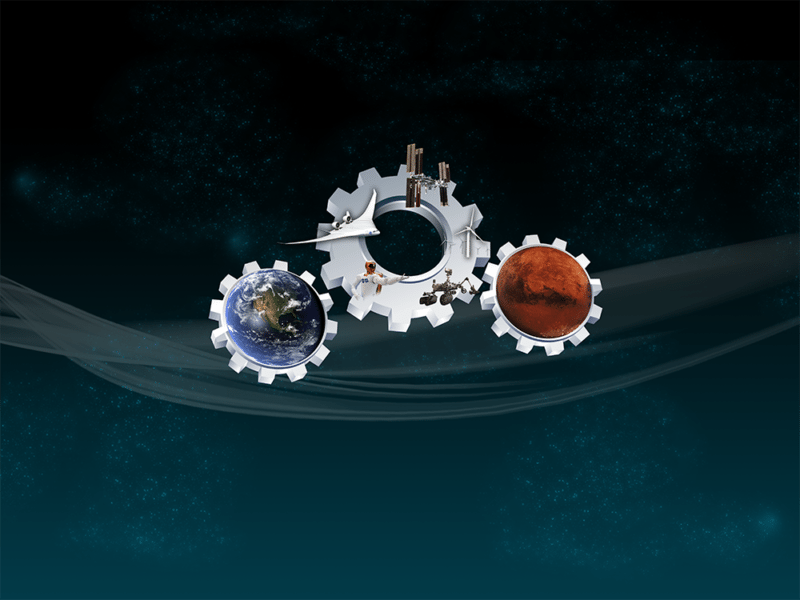Latest News

Photo: NASA
NASA is partnering with eight U.S. companies to advance small spacecraft and launch vehicle technologies that are on the verge of maturation and are likely to benefit both NASA and the commercial space market. These partnerships are the result of a solicitation released in August 2016 by NASA’s Space Technology Mission Directorate (STMD), titled Utilizing Public-Private Partnerships to Advance Tipping Point Technologies. They mark the second round of public-private opportunities that enable industry to develop promising commercial space technologies that also may benefit future NASA missions.
A technology is considered at a “tipping point” if an investment in a demonstration of its capabilities will result in a significant advancement of the technology’s maturation, a higher likelihood of infusion into a commercial space application, and a significant improvement in the partner’s ability to successfully bring the technology to market.
Small Launch Vehicle Technology Development
Small launch vehicle technology enables the use of small spacecraft for technology development, science missions and to support deep space human exploration. The agency is partnering with the following companies to accelerate the development of commercial capabilities to enable frequent launches of small spacecraft to Low-Earth Orbit (LEO):
- Masten Space Systems is developing an engine that will be used to provide a lower-cost reusable launch service for the growing cubesat and smallsat launch market.
- Ventions will provide a full launch vehicle integration and orbital flight test demonstration of a two-stage launch vehicle. The launch vehicle will be capable of on-demand ground launch of small payloads to LEO.
- Tyvak will produce a commercial micro-avionics platform that supports launch vehicles and microsatellites. The project also will create a real-time system capable of simulating launch scenarios. Tyvak will conduct three flight tests to demonstrate the micro-avionics platform.
- HRL Laboratories will develop additively manufactured high-temperature materials applicable to rocket engine components. HRL Laboratories, working with their sub-contractor Vector Space Systems, will mature the technology resulting in a hot-fire test of a high performance liquid oxygen/propylene rocket engine. This technology can be applied to small and large engines for launch vehicles.
- UP Aerospace: A suborbital mission will demonstrate several subsystems for a launch vehicle currently under development. The subsystems include a Guidance, Navigation & Control (GN&C) system, nose-fairing separation system, and lightweight staging system. In addition, a ground test will be conducted for the Stage 1 rocket engine. The launch vehicle will be capable of launching small nanosatellites to LEO.
- Orbital Sciences Corporation will incorporate advanced materials for dampening into flight structures to reduce dynamic loads during flight. They will build sub-scale and full-scale flight structures and complete end-to-end ground and flight testing. If successful, this technology has the potential to increase the payload capability and reduce costs for launch vehicles.
Small Spacecraft Capability Demonstration Missions
- Addressing a potential need for increased space situational awareness, Trans Astronautica will head an orbital demonstration seeking to detect near-Earth asteroids and orbital debris through a new technique that helps detect dimly lit, small, fast-moving objects. Working with Deep Space Industries of Moffett Field, California, and NASA’s Jet Propulsion Laboratory in Pasadena, California, Trans Astronautica will test a synthetic tracking system that detects objects streaking though its field of view and then, working in a way analogous to High-Dynamic Range (HDR) imagery, builds a composite image of the object.
- Opportunities to launch as secondary payloads offer an affordable way to get small spacecraft into orbit, but safety restrictions on launching with energetic and pressurized materials often prevents those spacecraft from carrying significant propulsion capabilities. ExoTerra will flight test a 300-watt solar electric propulsion system that uses iodine in place of xenon gas. Iodine can be launched as an inert solid and then vaporized into an ionized gas once in orbit, which removes the risk to the launch vehicle. Launching as a dense solid instead of a gas also increases the amount of propellant that can be stored in the same volume on the spacecraft. ExoTerra’s demonstration mission will attempt a flyby of a near-Earth asteroid with an instrumentation payload provided by Deep Space Industries.
These fixed-priced contracts include milestone payments tied to technical progress and require a minimum 25 percent industry contribution, though all awards are contingent on the availability of appropriated funding. The contracts are worth a combined total of approximately $17 million, and each has an approximate two-year performance period culminating in a small spacecraft orbital demonstration mission or the maturation of small launch vehicle technologies.
These awards are funded by STMD, which is responsible for developing the cross-cutting, pioneering, new technologies and capabilities needed by the agency to achieve its current and future missions.
Get the latest Via Satellite news!
Subscribe Now